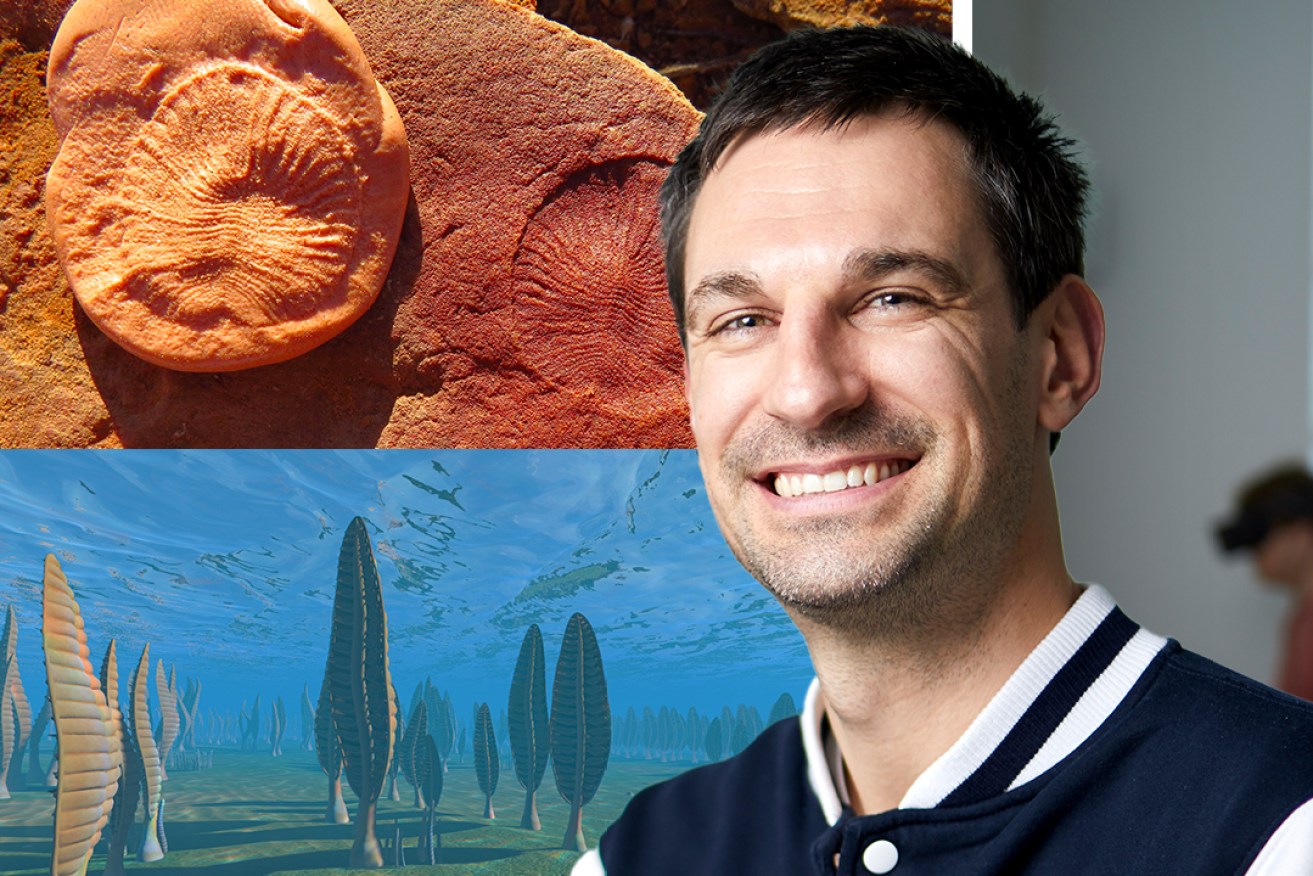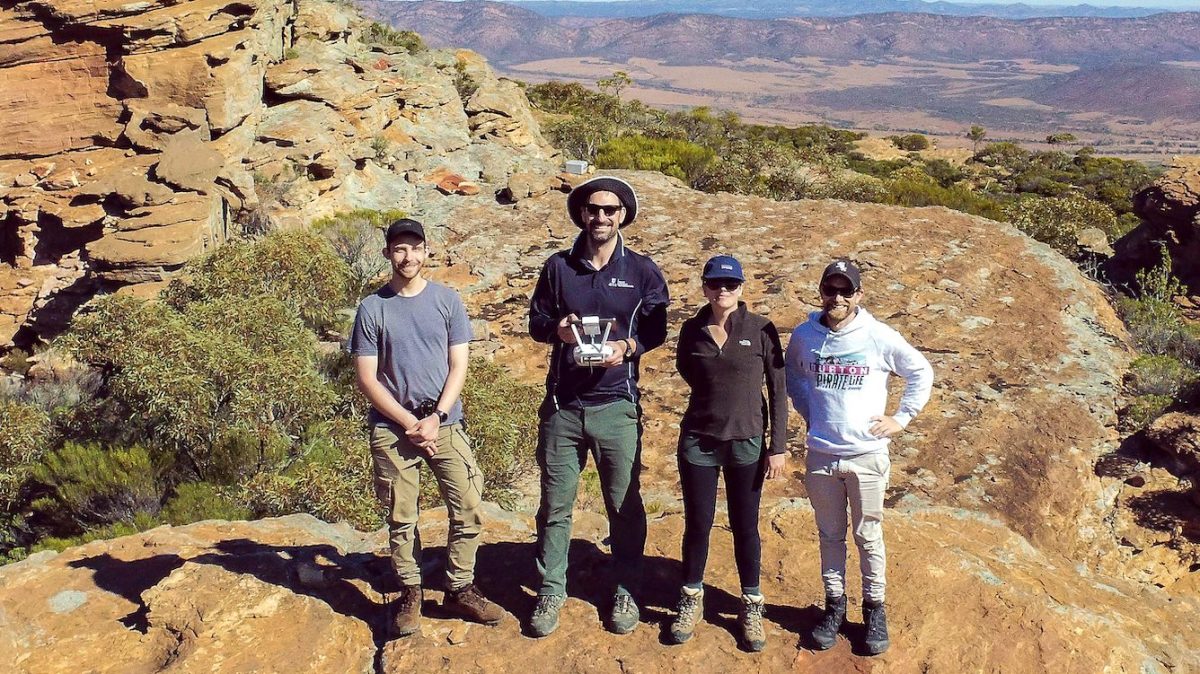Calls for more local learning as SA fossils make the science curriculum
Science teachers will include study of the unique Flinders Ranges Ediacara fossils in year eight lessons for the first time in 2023, with a leading academic calling for more South Australians to learn about their own backyard.


Geology Professor Tom Raimondo is creating new stories to teach the world about the state's Ediacara fossils.
SA fossil classes are long overdue, according to University of South Australia geology Professor Tom Raimondo, who believes there is more awareness internationally of the state being home to the world’s earliest animal fossils dating back 550 million years than there is locally.
“We don’t tell people about how significant these things are, about how important they are to evolution: these were the earliest animals on planet Earth living in the Flinders Ranges,” Raimondo said.
“People internationally know more about this site than people wandering the streets of Adelaide. We have research at this site being undertaken by NASA.”
This week the South Australian Science Teachers Association announced it had drawn together precious resources about the region to add to the year eight science curriculum next year, with the unit being successfully trialled this year at Seymour College in Adelaide.
SA Science Teachers Association executive officer Kate Dilger said there were currently no SA-focused resources for the earth and space topic, and this was the first time students could officially learn more about the region from their classrooms.
Resources were created with funding from the Flinders Ranges Ediacara Foundation and support from the Education Department and University of South Australia.
“We’re trying to make it as rich as possible,” Dilger said.
Among the resources is a new virtual interactive tour travelling back into Flinders Ranges history and exploring the fossils of Nilpena, the world’s single greatest record of the Ediacaran era giving insights into the origins of first animal life on our planet.

Field trip to gather footage for the Flinders Ranges virtual tour. From left: Jack Fraser, Prof Tom Raimondo, Dr Lily Reid and Steve Hill. Photo: Uni SA
It has taken 18 months to bring the fossils to life through UniSA STEM’s Project Live project, led by Raimondo, with the team creating the first scientifically accurate 3D reconstruction of Ediacaran animals.
Raimondo said the UniSA group worked extensively with the Flinders Ranges Ediacara Foundation to put together a teaching resource as there currently “is a complete lack of material for science teachers to talk to their students about what’s happening in their own backyard”.
“We have worked with the SA Science Teachers Association, the Department for Education and the Ediacara Foundation to produce content for this new (teaching) resource that is drawn from the virtual tour,” Raimondo said.
“Students will be able to view 3D reconstructions of the ancient animals and virtually swim through their seafloor habitat.
“It will be the next best thing to bringing 600-million-year-old fossils back to life, and hopefully inspire a new generation of budding geologists to follow in the footsteps of (SA geologists) Douglas Mawson and Reg Sprigg.”
Raimondo said the work also supports the state’s current bid to have the Flinders Ranges World Heritage-listed alongside sites like the Great Barrier Reef and Yosemite National Park in the United States.
A significant milestone was reached in April last year when UNESCO accepted Australia’s bid for the Flinders Ranges on its World Heritage Tentative List.
An Environment Department spokeswoman said the nomination dossier is now being written with the submission expected to be lodged with the World Heritage Centre in 2024.
The Ediacaran fossils are unique to the Flinders Ranges and a key element of the World Heritage nomination. The fossils preserved in the ancient sea-floor record the first known multicellular animal life on Earth that predates the Cambrian era.
Work is well underway to draw more visitors to the Ikara-Flinders Ranges National Park and the Nilpena Edicacara National Park, with a new visitor centre and tours expected to open next year.
Raimondo said the UniSA team made frequent field tours to the Flinders Ranges to create the new resources, meeting with Alan Harbour, an Adnyamathanha ranger in charge of tours in Brachina Gorge in the Ikara-Flinders Ranges National Park.
The team, including Dr Lily Reid who has a PhD in the Flinders Ranges Ediacara fossils, showed Harbour the Ediacaran creatures that have been reconstructed through the project with paleo artist Katrina Kenny who lives in the Adelaide Hills.
“When we showed him the 3D models he asked about printing them to take them so he could have them to show visitors on the tours of the gorge,” Raimondo said, adding that this had now happened and the models were joining the tours.
The virtual tour travels through the rugged Flinders Ranges mountain ranges to discover how Ikara (Wilpena Pound) was formed and also visits the recreated Ediacaran seabed.
It is the second virtual tour resource the Uni SA team has created. Raimondo says the first focused on the geologically significant Hallett Cove site in Adelaide and is called “Beyond the Ice”.
Hallett Cove is a geological monument and heritage site, preserved by nature in an ancient valley for hundreds of millions of years.
A NASA grant of more than $410,000 was last year awarded to an international team led by Distinguished Professor Mary Droser from the University of California–Riverside and Associate Professor Diego C. García-Bellido from the University of Adelaide’s Environment Institute, and the South Australian Museum.
The Exobiology Program at NASA is funding the three-year project started in January this year at the Nilpena Ediacara National Park, aiming to develop computer vision and machine-learning techniques to examine the fossil evidence of the Ediacara Biota – the earliest evidence of complex life.




